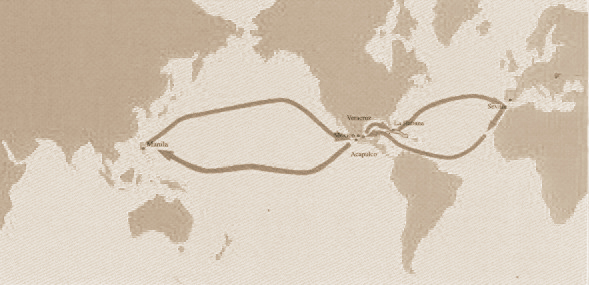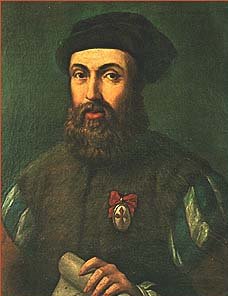
The Conquest of the Philippines

In an age when real estate was as abundant as air, the electronic industry was yet to come and financial bubbles didn't exist, the big business was spices. Discovered by the Romans many centuries ago, they had become an essential part of European life pretty quickly. There was a catch: they were only found in India, over seven thousand miles away, and there was a whole industry of middlemen making money by bringing them from over there to, for example, the Golden Mile in Marbella.
Perhaps the fact that opium was considered a spice import may put Europe's dependence on this trade system into perspective.
In any case, whenever they weren't waging war against each other or arranging to marry their offspring, the monarchs of Europe would devote themselves to finding new routes from which to bring the spices themselves -- that way they could cut the middle man and join in on this lucrative business.
In fact, the game-changing discovery of America in 1492 was a blatant mistake. The courses the Spanish had set before sailing were actually aimed towards finding the Middle East. Even though the fortunate discovery had a lot of other advantages, Charles V was aware that he hadn't found his way to India. So he sent a new explorer, a Portuguese-born captain called Ferdinand Magellan, to finish the job. He didn't find India either. Instead, he did the Columbus thing of accidentally discovering new land.
He also waged one of the strangest wars in Spanish history.
Spanish Conquest of the Philippines - round one.

In March, 1521, Ferdinand Magellan was darting across the Pacific ocean when he thought he'd spot some land. It was a much-needed sight. He had just suffered a mutiny (one of the side effects of sailing through uncharted waters is that the crew tends to lose their patience) and had but three ships out of the five he initially had. He decided to stop and get some food and water.
Now, besides being a successful sailor, he must have been a man with people skills. Ferdinand Magellan was quickly taken in by the natives and befriended their leader, the Sultan of Cebu. He promptly Christianized everybody, with the exception of one: Lapu Lapu. He was a tribal chief on the nearby island of Mactan who disliked Cebu and wouldn't accept his orders to be Christianized.
It was fantastic opportunity for Magellan to showcase the power of his men and his weaponry. That'd show the natives how unwise it would be to not obey him. He decided to battle the Mactan tribe. After all, fighting natives seemed pretty easy.
That was a fatal mistake. When he met the Mactans on their own island, he found about 1,500 ready to attack. They immediately recognized the captain and swarmed over him. After admirably surviving a few blows (an arrow in his shoulder and two hits on the head), Ferdinand Magellan died. The remaining crew was driven back to their boats. There were so few survivors, they easily squeezed into two vessels. They had to burn the other one to prevent the natives from chasing them.
Lapu Lapu thus became the first native to victoriously resist the oppression of foreign colonists.
The Return of the Spaniards
It would be another 40 years until Spain finally attempted the Spanish conquest of the Philippines again. Namely, with the Miguel López de Legazpi. This man, Spain's first royal governor, found his way to the islands from New Spain, or Spanish Mexico as we call it nowadays. He decided to name the islands after King Philip II. Working his way from Maynilad (what now is Manila), he moved Spain's sway up north. It is not known what he did when he met Lapu Lapu.
The Philippines weren't the gold mine that Peru was. In fact, there were no spices or minerals that attracted Spanish attention. The islands' worth was more strategic than anything else: the islands were a fantastic stopover in the middle of the Pacific ocean, brimming with food and peaceful people. They learned from the Spanish how to grow corn and then watched their colonists move on to other, more lucrative endeavors. Luckily for the natives, the Spanish conquest of the Philippines was not as bloody as the American ones.
